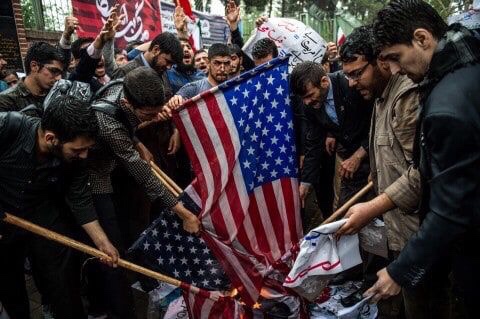 If Iran wants nuclear weapons, it will get them
If Iran wants nuclear weapons, it will get themThe path to today’s problems with Iran passed through the University of Chicago squash court where on Dec. 2, 1942, for 4½ minutes physicist Enrico Fermi, making calculations on a slide rule, achieved the controlled release of energy from an atomic nucleus. Historian Richard Rhodes says that Fermi and his colleagues were risking “a small Chernobyl in the midst of a crowded city.”
Humanity was already on the path to the dangerous present in 1918 when the British physicist Ernest Rutherford , who was criticized for missing a meeting about anti-submarine warfare, said, “I have been engaged in experiments which suggest that the atom can be artificially disintegrated. If this is true, it is of far greater importance than a war.”
So, when wondering about what can be done about Iran’s nuclear-weapons aspirations — and North Korea’s nuclear-weapons facts — remember this: Some advocates of the Iran nuclear agreement thought its purpose was to block “all of Iran’s pathways to a bomb,” which was President Barack Obama’s formulation when his goal was to dismantle the infrastructure of Iran’s program. Other advocates of the deal thought it was prudent to pretend to think this. The realistic purpose, however, was the more modest one of making the “pathways” longer and steeper, in the hope that internal Iranian ferments would begin to make that nation less menacing by the time it began to create nuclear weapons.
Although much sophistication has been added over the decades, the basic recipe for building nuclear weapons comes from the 1940s, and for ballistic-missile technology from the 1950s. The Soviet Union was an almost prostrate nation with a shattered society when, just 51 months after the guns fell silent on V-E Day (May 8, 1945), it detonated its first nuclear weapon in August 1949 . China was an almost entirely peasant society, with a population of 694 million (about half of today’s), when in 1964 it detonated its first nuclear weapon. In 1998, Pakistan, with its per capita income of $470, acquired such weapons.
Nuclear nonproliferation efforts have been more effective than seemed possible 60 years ago. During the 1960 presidential campaign, John F. Kennedy cited “indications” that by 1964 there would be “10, 15 or 20” nuclear powers. As president, he said that, by 1975, there might be 20 such powers. Today, sanctions can increase the price Iran pays for attempting to acquire nuclear weapons; Israel can assassinate scientists working in Iran’s nuclear program. If, however, Iran wants such weapons as intensely as its decades of costly efforts suggest, it will get them.
It is a law of arms control: Significant agreements are impossible until they are unimportant, which means until they are not significant. If Denmark wanted nuclear weapons, we would consider that nation daft but not dangerous. Iran’s regime is malevolent, but there are polls (how do you poll in a theocratic police state?) showing substantial support for the nuclear-weapons program and ballistic-missile development. The median age in Iran is 30.3 years (in the United States: 38.1; in the European Union, 42.9). The nation is more porous to outside influences than can suit the regime, which has a despotism’s normal preference for intellectual autarky. So, buying time was not a negligible goal for the original deal — or for whatever comes next, if anything does.
It is condign punishment for Obama that his signature foreign-policy achievement, the deal with Iran, could be so casually jettisoned. It should have been a treaty. If it were, it would have enjoyed more public support and could not have been erased by what created it — presidential unilateralism. Obama’s successor might learn from this when — if — he produces an alternative plan for a slightly more distant and less dangerous future.
Seventy-three years have passed since the first nuclear explosion in New Mexico. Less than a month later, there occurred the first two, and so far the only, uses of nuclear weapons. Sixty-eight years have passed since the Soviet Union became the second nuclear power. Deterrence as the basis of containment has not been restful, but has been successful. Nevertheless, in September 2012, the Senate voted 90 to 1 for a nonbinding resolution “ruling out any policy that would rely on containment as an option in response to the Iranian nuclear threat.” So, almost six years ago the Senate declared unacceptable a policy that, perhaps six years from now, the United States might have no alternative but to accept.
No comments:
Post a Comment